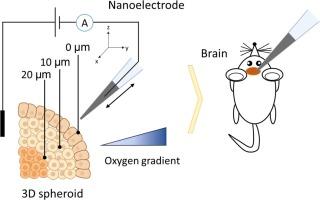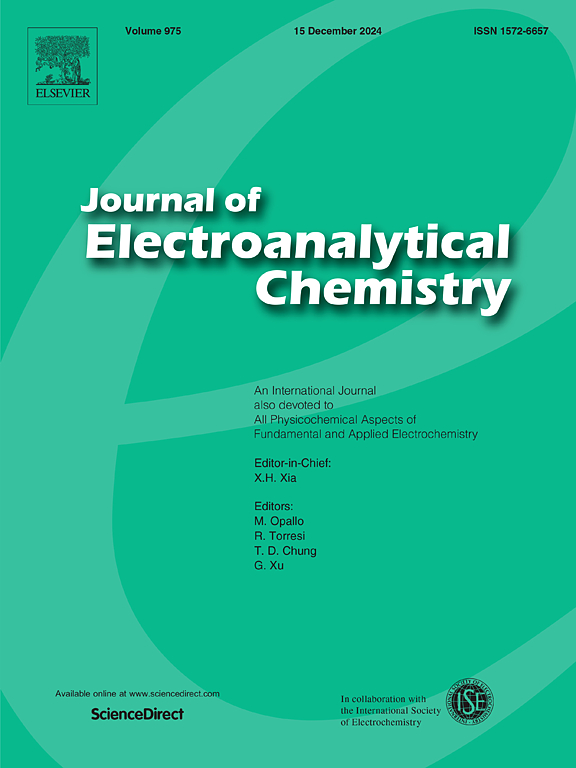用于生物分析的体外/体内氧电化学纳米传感器
IF 4.1
3区 化学
Q1 CHEMISTRY, ANALYTICAL
引用次数: 0
摘要
对许多生物过程进行直接的体内氧气监测至关重要,因此开发新型高灵敏度的体内氧气检测技术具有重要的潜在意义。电化学安培传感器是最有前途的传感器之一,操作简便、价格低廉、灵敏度高且时间分辨率高。作为这项工作的一部分,我们展示了一种在体外多细胞球体内和体内大鼠脑内直接快速检测分子氧的方法。利用开发的纳米电极研究了人腺癌 MCF-7 球体内外部和内部的氧气分布。研究表明,球体的大小会影响其内部的缺氧程度,也会影响溶液中球体附近的耗氧量。为了证明这种新型传感器在体内的相关性,我们用它测量了大鼠大脑表层的氧气浓度。这项研究展示了一种微创电化学方法,可用于实时分析体内氧含量。本文章由计算机程序翻译,如有差异,请以英文原文为准。

In vitro/In vivo oxygen electrochemical nanosensor for bioanalysis
Direct in vivo monitoring of O2 is critical in the study of numerous biological processes, and the development of novel highly sensitive techniques for O2 in vivo detection is of great potential importance. Electrochemical amperometric sensors are some of the most promising, easy to operate, inexpensive, sensitive and have a high temporal resolution. As part of this work, we have demonstrated a direct rapid method for molecular oxygen detection inside multicellular spheroids in vitro and rat brain in vivo. External and internal oxygen profiles in human adenocarcinoma MCF-7 spheroids were studied using developed nanoelectrode. The size of spheroids was shown to affect the level of hypoxia inside them, and also affected the oxygen consumption near spheroids in solution. To demonstrate the in vivo relevance of the novel sensor we used it to measure the oxygen concentrations in the superficial layers of the rat brain. This study demonstrates a minimally invasive electrochemical method for real-time oxygen profiling in vivo.
求助全文
通过发布文献求助,成功后即可免费获取论文全文。
去求助
来源期刊
CiteScore
7.80
自引率
6.70%
发文量
912
审稿时长
2.4 months
期刊介绍:
The Journal of Electroanalytical Chemistry is the foremost international journal devoted to the interdisciplinary subject of electrochemistry in all its aspects, theoretical as well as applied.
Electrochemistry is a wide ranging area that is in a state of continuous evolution. Rather than compiling a long list of topics covered by the Journal, the editors would like to draw particular attention to the key issues of novelty, topicality and quality. Papers should present new and interesting electrochemical science in a way that is accessible to the reader. The presentation and discussion should be at a level that is consistent with the international status of the Journal. Reports describing the application of well-established techniques to problems that are essentially technical will not be accepted. Similarly, papers that report observations but fail to provide adequate interpretation will be rejected by the Editors. Papers dealing with technical electrochemistry should be submitted to other specialist journals unless the authors can show that their work provides substantially new insights into electrochemical processes.

 求助内容:
求助内容: 应助结果提醒方式:
应助结果提醒方式:


